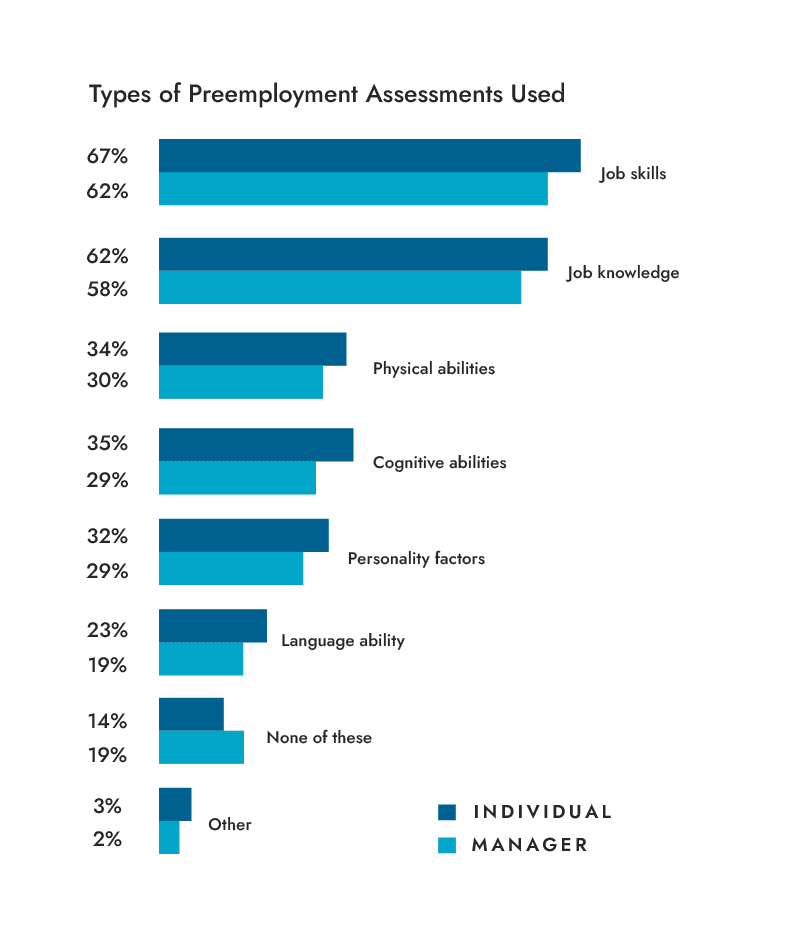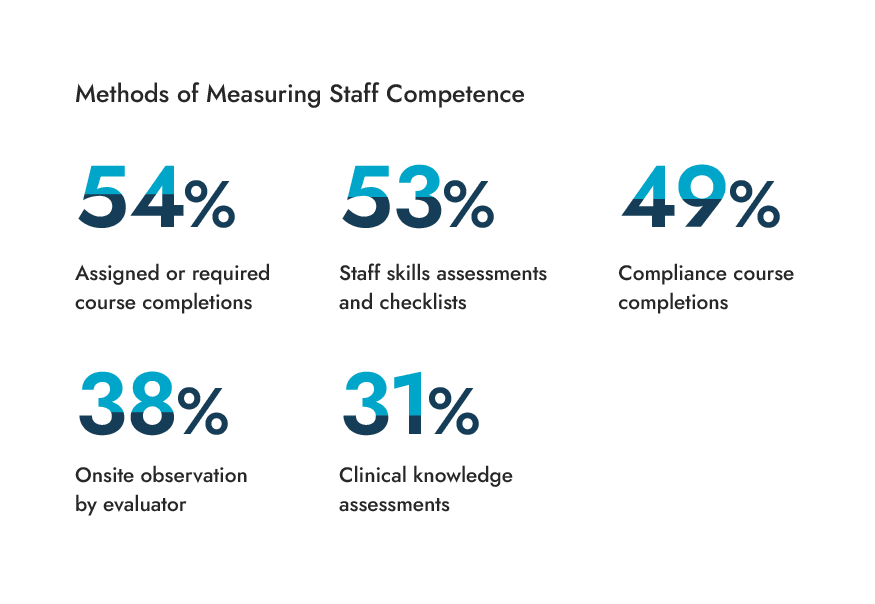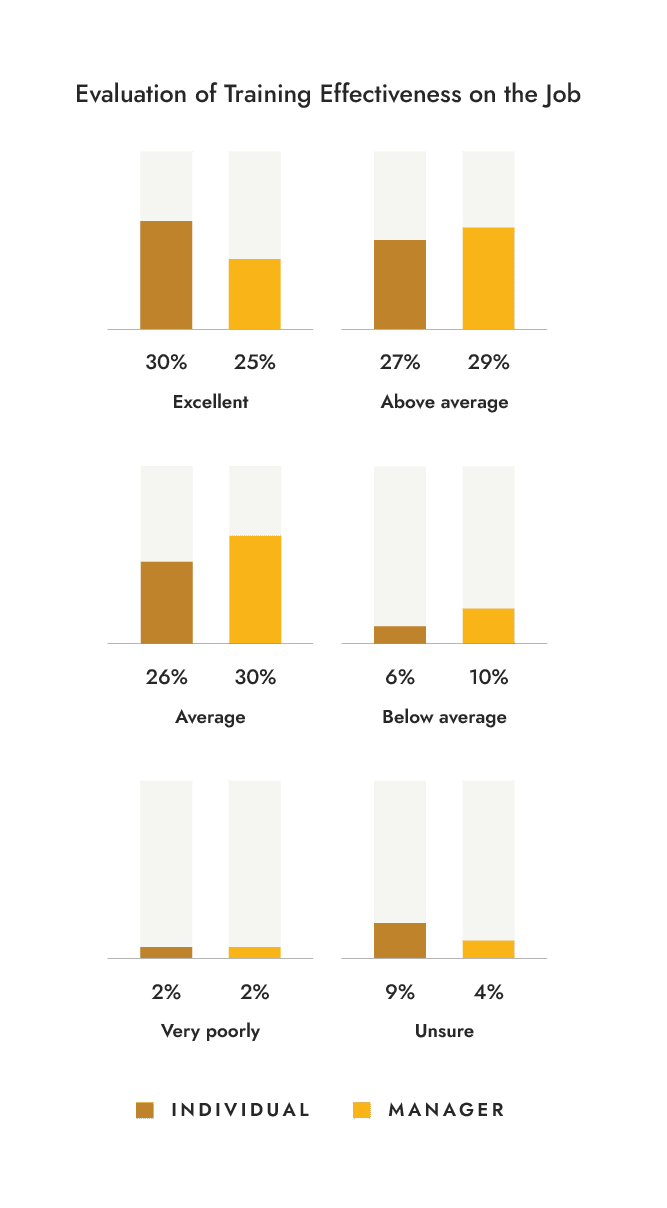Using data to hire and retain staff
As managers across the healthcare continuum continue to struggle with hiring and retaining staff, L&D teams can help by combining prehire and competency assessments with targeted learning. An integrated learning management platform can make it easier to coordinate meaningful learning that improves competence and confidence.
Many organizations already have assessments in place, but the training link appears to be missing. A majority of managers use preemployment assessments during screening of prospective new hires. More than half use skills assessments and checklists to measure staff competence.
Yet 18% of managers were not sure how their organization used data and analytics to inform training. Closer links between assessments, competency, and training assignments could improve retention and organizational outcomes.
Use of preemployment assessments
Despite staff shortages in many sectors, a majority of managers are using job skills and job knowledge assessments during preemployment screening. These tools can ensure job fit and support retention.
However, when staff shortages are severe, weeding out applicants with preemployment assessments might not be a priority.




Although adoption of preemployment assessments was not as strong among health and human services respondents, many organizations are finding them useful to support skills-based hiring, competency training, and retention.
Acute and pre-acute care organizations also are less likely to use preemployment assessments.
Whether or not an organization assesses candidates’ knowledge and skills during the prehire phase, it is vital to assess employee competence on the job.
Measuring staff competence
Healthcare leaders in all sectors want to ensure they have the best fit for their job roles and recognize any skill gaps early in the onboarding period. Managers are using a multipronged approach to measuring and managing staff competence. The most frequently used measures are course completions, skills assessments and checklists, and observations by onsite evaluators, as shown in the responses. Strategic decisions hinge on this awareness.


“To ensure quality care, it is important to know where your employees stand. Then you can place talented staff in high-impact job roles and upskill those who need a boost in certain areas.”
Vince Baiera, BSN
Training’s effectiveness on the job
More than half of respondents said their organization is excellent or above average at evaluating whether staff members use their training on the job.


By regularly evaluating competency and performance on the job, managers can support career growth. For retention, employees want to know that their employer offers career advancement resources. When an organization uses competency management tools, staff can demonstrate improvements in their job knowledge and skills over time. They can also seek evaluations that align with a role they would like to move into, so they know how their strengths fit and where they need to improve.
Takeaway
These results indicate an opportunity for leaders to find more ways to link assessment data to training assignments so they can target areas ripe for improvement. Using an integrated learning management platform can make that process easier for L&D and management teams to ensure competency.






